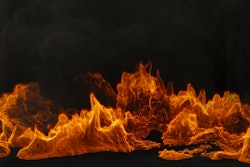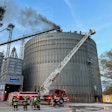
The annual summary released by Purdue University recorded a total of nine grain dust explosions in the United States in 2023. While these incidents resulted in 12 injuries, there were no reported fatalities. This data indicates that there was no increase in dust explosion incidents compared to the previous year, 2022. It is worth noting that the 10-year average of such incidents, which stands at 8.4, remained relatively unchanged. This average is significantly lower than the average number of incidents that occurred prior to the implementation of the Occupational Safety and Health Administration's grain handling standard in 1988.
All nine dust explosion incidents in 2023 took place in the Midwest region of the United States. The majority of these explosions occurred in the corn handling or processing industry. The specific locations affected include one ethanol plant, one wheat mill, two grain elevators, two soybean processing plants, two corn processing plants, and one corncob processing plant
Determining the ignition sources of dust explosions is crucial for preventing future incidents. In two cases, fire was identified as the probable ignition source, while another case was attributed to equipment malfunction. Surprisingly, the sources of ignition remained unknown in six cases. This highlights the need for enhanced safety measures and thorough investigations to identify potential risks. Other identified ignition sources included welding, friction sparks, malfunctioning mechanical components, smoldering material, overheated bearings, sparks from electrical equipment, exposed light fixtures, sparks in dust collection units and dryers, dust collector malfunction, malfunctioning pulleys, lightning strikes, and structural collapses[^1^].
To gain a deeper understanding of the probable ignition sources, let's take a closer look at the data from 2006-2014, as compiled by Sanghi and Ambrose in their study published in the Journal of Agricultural Safety and Health.


















